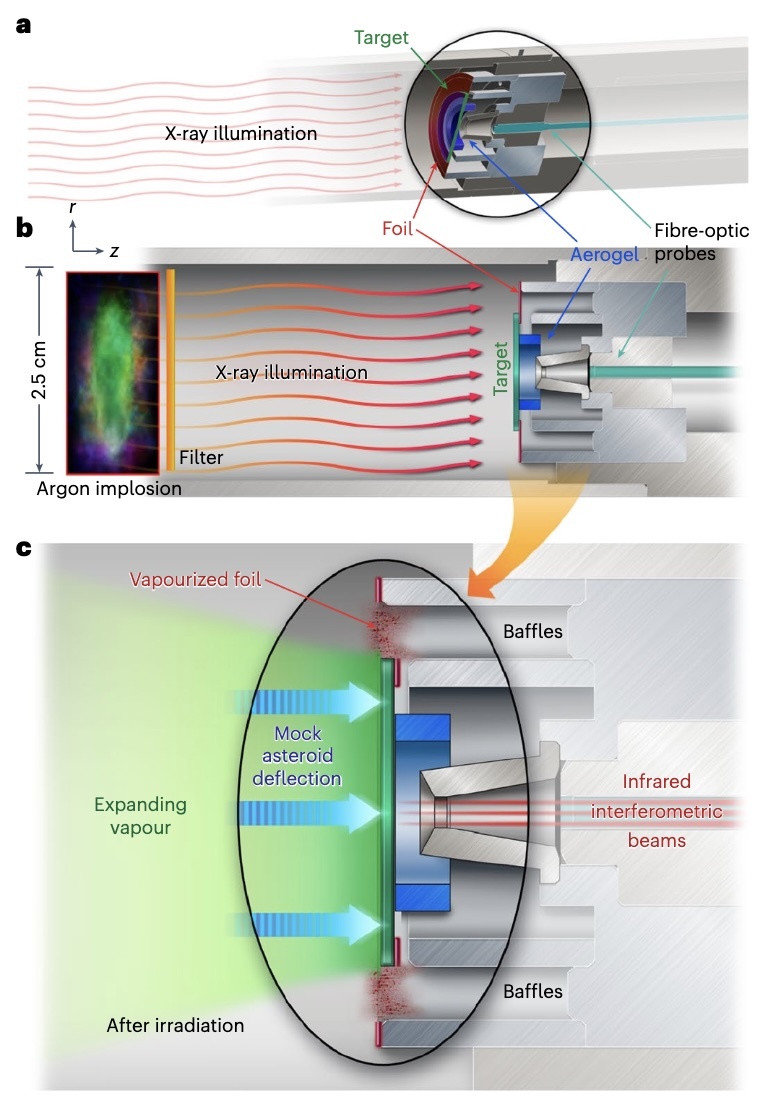
September 30, 2024 by Mark Thompson
Collected at: https://www.universetoday.com/168752/nuclear-detonations-could-deflect-dangerous-asteroids-away-from-earth/
Before you read the rest of this article know there are no known threats to life on Earth! We shouldn’t sit complacently on this tiny rock in space though so NASA have been working on ways to neutralise potential asteroid threats should they arise. The DART mission proved it was possible to alter the trajectory of an asteroid in space. Direct impact though where a probe smashes into the rock is one way but potentially not the best. A team of researchers have now been exploring ways that a nuclear explosion near an asteroid may send a blast of X-rays sufficiently powerful to vaporise material generating thrust to redirect the asteroid.
Statistically the risks of an asteroid are low but the ‘impact’ of such an event could be catastrophic. The majority of asteroids that enter our atmosphere burn up giving us the stunning sight of a ‘shooting star’ but those over 1km wide could cause widespread damage and devastation. The likelihood is rare and might occur once every several hundred thousand years but smaller objects hit more often. They can also create significant localised damage. Take the Chelyabinsk event in Russia in 2013 when an asteroid exploded in mid air sending shockwaves across hundreds of kilometres.

Whilst the risk is low we must put in place a plan to deal with such threats when they arise. The Double Asteroid Redirection Test mission that NASA launched back in 2021 sent a probe to the binary asteroid system Didymos with its tiny moon Dimorphos. The probe hit Dimorphos in September 2022 and very slightly altered the orbit proving it is possible to effect change in an asteroid trajectory. Whilst the approach worked, the scope of such an approach is limited since colliding a spacecraft may not be so effective on large asteroids. Coupled with the liklihood of not getting much notice and an alternative, more, effective approach is needed.

Other approaches have been explored from deployment of fusion engines to the target rock, focussing laser beams on them, neutron bursts and of course nuclear blasts that generate X-ray radiation. Analysis of these options reveals that only the latter, nuclear blasts has been deemed as a suitable approach for the neutralisation of the threat of a large asteroid impact when only limited time is available.
A team of researchers led by Nathan W Moore has shown through simulations that a nuclear bomb could indeed deflect an incoming asteroid. Much of the energy release from a nuclear explosion is in the form of X-rays. the team showed that the X-ray emission would be sufficiently powerful to be able to vaporise the surface of an asteroid causing the results vapour to slowly propel the asteroid in the opposite direction. You can think of this as a very basic rocket engine with the vapour producing thrust. In simulations, the test asteroid reached speeds of 250 kilometres per hour!
The results showed for the first time that X-rays could work and may provide sufficient protection against an incoming asteroid up to 4 km wide assuming of course, we have sufficient notice! There in lies the challenge, asteroids are typically dark and finding them against the blackness of space can be a challenge. The more time we have, then the greater chance we have of deflection being a viable proposition.
The next step is for actual tests however, nuclear explosions come with high costs, high risks and a whole bunch of international legal restrictions. Careful planning is now needed with perhaps a little more research before this approach can be put on the shelf to be used should the need arise!
Source : Simulation of asteroid deflection with a megajoule-class X-ray pulse

Leave a Reply